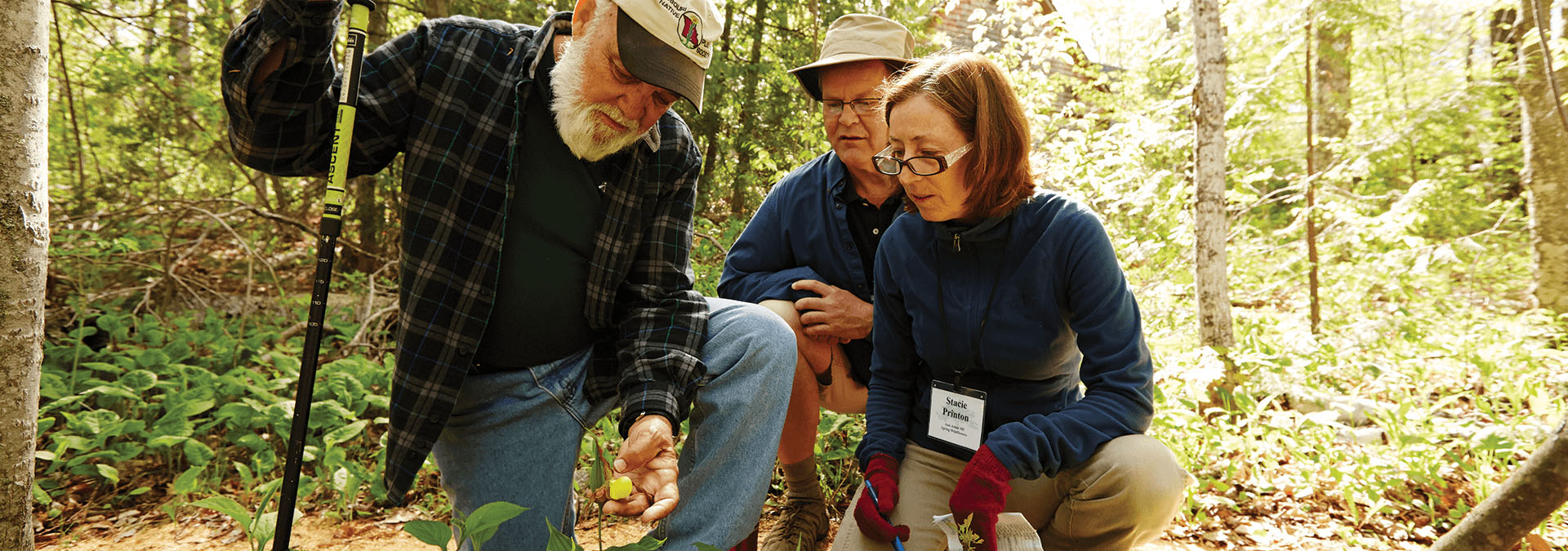
Hunting for Wild Mushrooms in Door County
Published
Embark on a Mushroom Treasure Hunt in Door County!
Discover Door County's delectable wild mushrooms, from beloved morels to elusive black trumpets. Join field expert Charlotte Lukes for an unforgettable foraging adventure as she uncovers over varieties found in our forests.
Key Tips for Mushroom Foraging:
- Morels thrive in spring; chanterelles bloom in summer, and black trumpets blend with the forest floor.
- Respect nature: forage only where permitted and always consult experts before consuming.
- After a rain, focus near fallen trees for the best finds.
Ready for a unique adventure? Plan your Door County mushroom foraging journey today!
Door County’s edible wild mushrooms are as easy to find on the plates at local restaurants as they are in the damp woods throughout the peninsula. Morels may be the favorite, but everything from chanterelles to black trumpets dot the county waiting to be cooked up in your favorite dish.
Author Charlotte Lukes has identified more than 550 varieties of mushrooms in Door County, and often leads hikes to find and identify them.
“The shapes and colors and sizes of mushrooms are always a delight," she says. "You come upon some that are brilliant red and deep orange and yellow. There are a few that I’ve found that were purple. It’s like going on a treasure hunt.”
Mushroom Foraging in Door County
Here a few general guidelines for mushroom hunting:
- You can collect mushrooms in all Wisconsin State Parks, but not in state natural areas.
- Be sure to check with any public lands or reserves before hunting.
- Mushrooms are best found a day or two after a rainfall.
- Look near fallen trees and other decomposing areas of the forest.
- Double check with an expert before eating any mushrooms.
Mushroom Varieties
Here’s a breakdown of the most popular edible wild mushrooms to find in the area and some ideas on what to do with them.
Morels
Commonly found starting in early spring when the ground temperature reaches above 40 degrees, morels can spring up overnight after a particularly wet couple of days. They tend to grow in clusters so if you find one, there are probably more nearby. Pair the morel with other light spring foods like asparagus and halibut. Otherwise, a little butter in a frying pan never fails with these elusive fungi.
Chanterelles
These fragrant mushrooms pop up in the hardwood forests in the heat of the summer. With consistent summer rains, the chanterelle can be found well into the fall. Chanterelle risotto is a favorite dish of some local chefs while its light apricot scent can serve well with any grain.
Black trumpets
Although a bit more elusive given their ability to blend in with the forest floor, the taste of these hardwood-loving mushrooms is worth the hunt. Often appearing as little black holes in the ground, they are most easily spotted by seeing them from directly above, so keep your eye on the ground.
When cooking, flash fry them to hold onto their dark, earthy flavor and then toss them with dark greens, pine nuts and a light citrus vinaigrette for a summer salad.
Sulfur shelf
Chicken of the woods and hen of the woods are the two common names given to these mushrooms that grow like shelves off of trees. They often have a vibrant red color near the tree trunk that becomes yellow towards the edges. This yellow part is your meal and the name doesn’t lie. Use this mushroom as a substitute for chicken in soup or stir fry. As a warning, some stomachs just don’t jive with the sulfur shelf mushrooms, so it’s best to try just a little bit at first.
Puffball
These soccer ball-looking mushrooms don’t offer much in the way of flavor, but they are fun to find. The biggest one ever found was more than five feet wide. The big white balls are best served fried, but you can add them to a miso soup if you’re feeling adventurous.
How to Leave No Trace
When searching for these often-elusive fungi, be sure to help us Care for Door County by following these Leave No Trace guidelines:
- Know before you go by educating yourself about different mushroom types.
While there are some species you can eat, others are poisonous. Before setting out, learn what types of mushrooms are okay for you to consume and always double-check with a local expert before you eat them. If you are uncertain whether a species is harmful, air on the side of caution and throw it out. - Do your research and make sure you are allowed to collect mushrooms in the area you plan to visit.
While Wisconsin State Parks allow mushroom hunting, it is not allowed in state natural areas. Always check with any other public lands or reserves before hunting. - Conduct your search from established trails.
While it may be tempting to wander deep into the woods to find some fungi, it is important to do your best to stay on the trail. This will not only protect vegetation but will also help prevent you from getting lost. Instead, check near fallen trees or other decomposing areas that are near the trail. If you do have to move off-trail, remember to stick to durable surfaces such as rock, dirt, or dry grass to prevent erosion and damage to fragile vegetation. Mushroom hunting is best done a couple of days after it rains, so while traveling on trails always walk-through mud and puddles, rather than around. This will help prevent damage to plants and trail widening. - Be mindful of other mushroom hunters.
If you stumble upon a great big bunch of mushrooms, it may be tempting to take them all. However, once they are gone for that year, they will not grow back. Instead, share your treasures with the next hunter and leave some for them to find.
Sign up today!
Visit Door County virtually with monthly newsletter updates. Each issue is jam-packed with vacation ideas, special offers, recipes, festivals, events, and more.
Subscribe to the Newsletter




